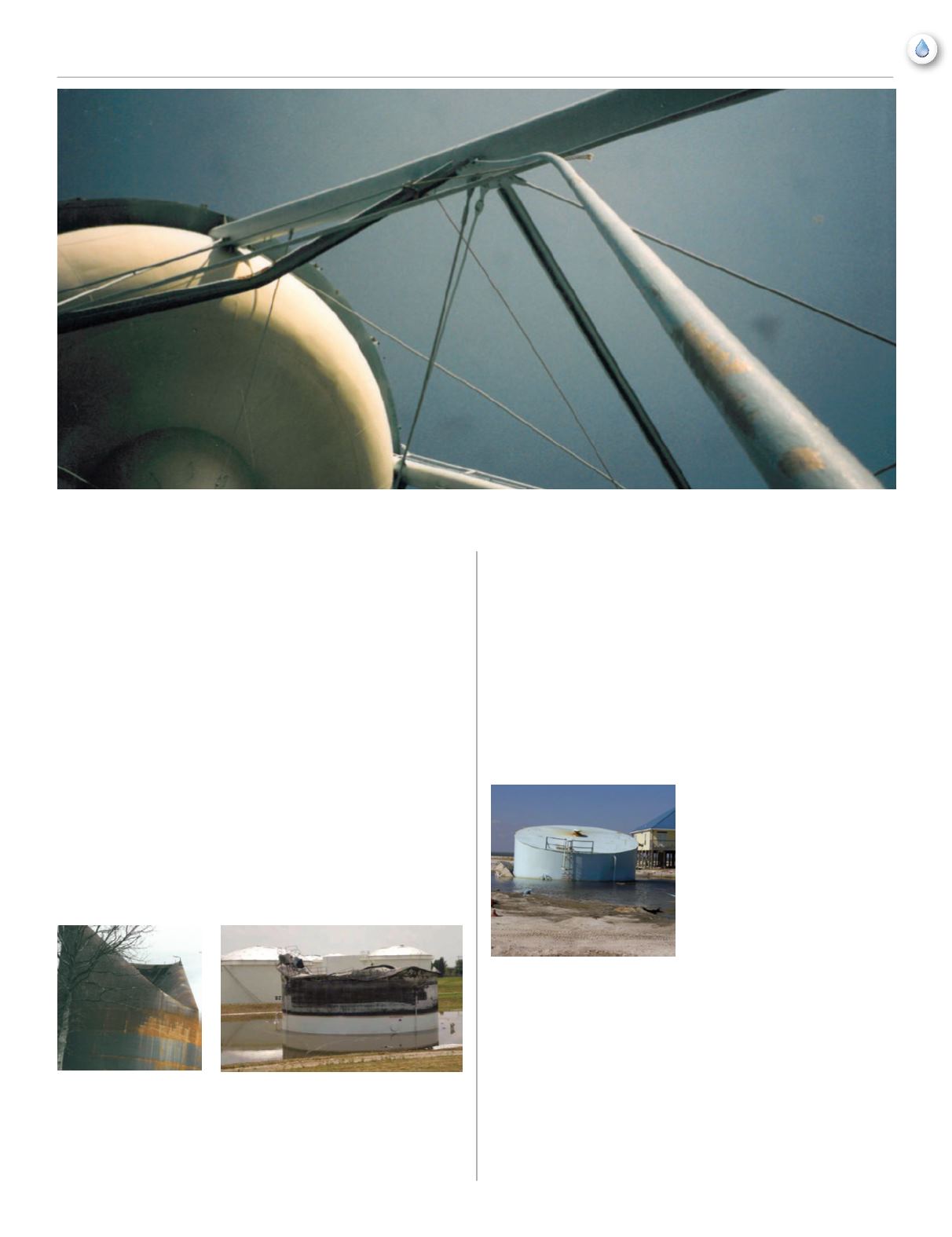

S
evere weather can be devastating, and according to numerous weather
sources is occurring more frequently and widespread. Tornadoes are
now occurring anywhere from the Rockies to the east coast. Currently,
the southern pacific coast is experiencing a severe drought, many
areas in the east coast are flooded, and thousands of people were killed
in the Nepal earthquake.
Severe weather does not discriminate, and it can damage or destroy
everything in its path including water tanks. Necessary water supply
for consumption, fire protection, and emergency needs is crucial to
everyday well-being, and even more when a severe weather event
occurs. Therefore, water tanks should be designed, constructed,
maintained, and inspected to withstand severe weather.
Tanks that have experienced winter storms and freezing should
obviously be inspected for damage, but seismic activity, high winds,
lightning, droughts, and flooding also occur in the summer months
and tanks are susceptible to damage from them as well.
HIGH WINDS/LIGHTNING STRIKES
National Fire Protection Association (NFPA) states, “Anchor bolts
shall be arranged to securely engage a weight at least equal to the
net uplift when the tank is empty and the wind is blowing from any
direction
1
.” Lightweight tanks definitely need to be anchored against
high winds in areas that experience them, and elevated water tanks
should have their windage rods inspected and tightened regularly to
maintain winds of 150 mph, blowing from any direction.
Tanks not grounded are subject to lightning damage. Lightning strikes
could cause power outages that could affect the ability to receive water.
Water pumps and alarms could malfunction, or a complete tank failure
could occur. NFPA 780 states, “Tanks shall be grounded to conduct
away the current of direct strokes and the buildup and potential that
cause sparks to ground
2
.”
DROUGHT/FLOODING
When a drought occurs, aggressive
water conservation measures are
often taken; but tanks still need to be
inspected and cleaned. To conserve
precious water, Robotic Operated
Vehicles (ROVs) can be used to
inspect and clean tanks without
draining them, thus saving the water.
Foundation damage can easily occur if tanks are subjected to flooding
for prolonged periods. Tank sites should have good drainage to
minimize or prevent possible foundation damage from flooding. The
site design should also include provisions for draining the tank and
the discharge from the tank overflow without damaging the tank site
or neighboring properties.
SEISMIC ACTIVITY
Tanks are designed and constructed for resisting earthquake damage
by complying with the earthquake design load provisions of American
WATER TANKS & SEVERE WEATHER
Fall 2015
NCRWA.COM11
feature
By Erika Henderson, Pittsburg Tank & Tower Group
















